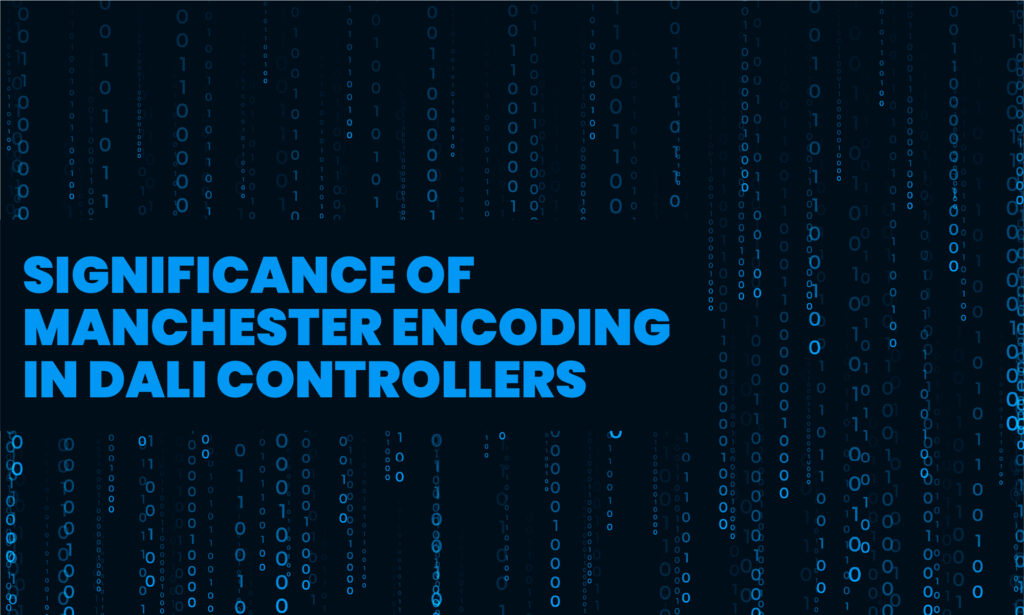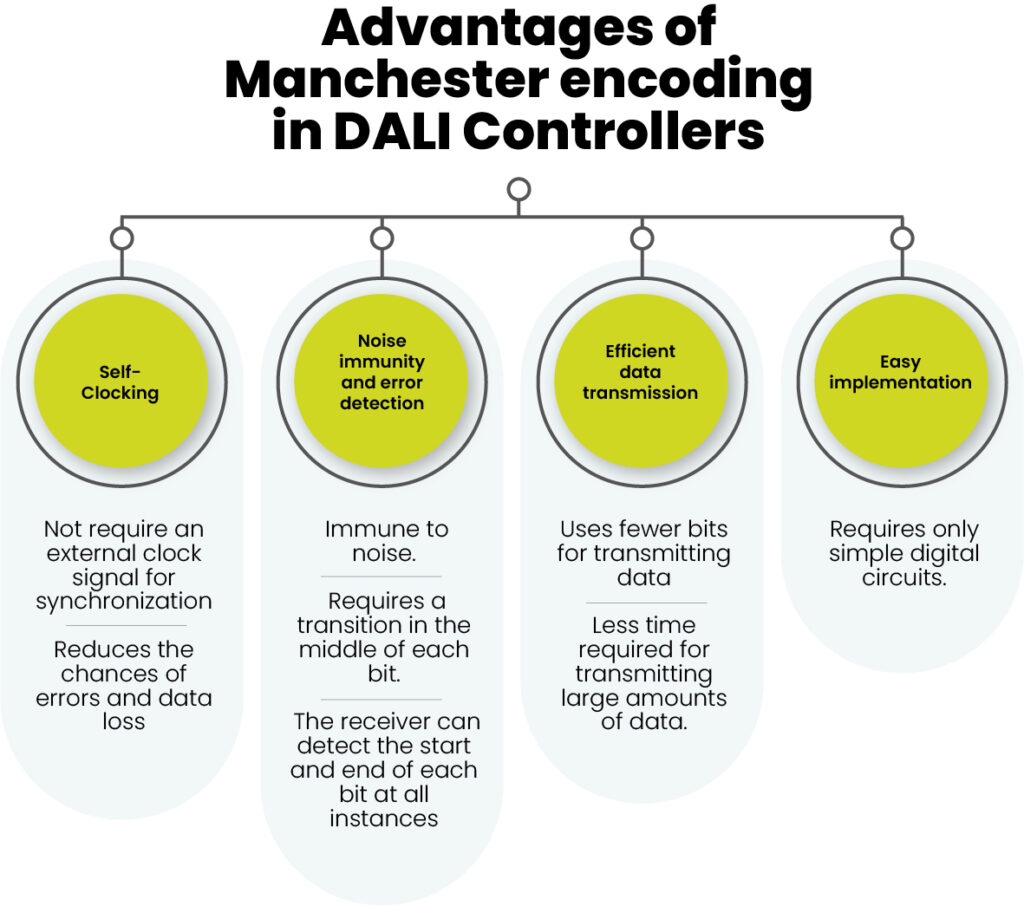Manchester Encoding: Ensuring Reliable Communication between DALI Drivers and Controllers

Isn’t it amazing how far we’ve come in the world of lighting control? Gone are the days of just flipping a switch on and off. Nowadays, lighting systems are getting smarter and more advanced by the day. The Digital Addressable Lighting Interface (DALI) protocol is at the forefront of this transformation, and one of the essential components of this protocol is Manchester encoding. Manchester encoding is what enables reliable communication between DALI controllers and drivers.
Thanks to Manchester encoding, DALI controllers can send precise commands to the drivers, and drivers can send back information about the lighting system’s status to the controller. This reliable communication is essential in accurately controlling the lighting system and achieving the desired lighting effects. It’s hard to overstate the importance of Manchester encoding in making this all possible.
In this blog, let’s dive deeper into the significance of Manchester encoding and explore why it’s so critical to accurately control the lighting system.
What is Manchester encoding?
Manchester encoding is a method of digital signal encoding that combines the clock signal and data signal into a single signal. This is done by adding a transition (from high to low or vice versa) at the midpoint of each data bit. The resulting signal has a regular pattern of transitions that can be used to determine both the clock rate and the data value.
One key benefit of Manchester encoding is that it helps to minimize errors that can occur due to variations in signal timing. By combining the clock and data signals, Manchester encoding ensures that the receiver can accurately determine the start and end of each bit, even if the signal timing varies slightly due to factors such as temperature changes or electromagnetic interference.
Importance of Manchester Encoding in Ensuring Reliable DALI Communication
In DALI communication, the controller sends commands to the DALI driver, which in turn controls the lighting system. Manchester encoding is used to ensure that these commands are accurately transmitted and interpreted by the driver, thus enabling reliable communication between the controller and the driver.
Let’s take a few examples of Lumos Controls DALI controllers to illustrate the importance of Manchester encoding in ensuring reliable communication.
- Accurate Data Transmission: Our controllers use Manchester encoding to encode data for transmission over the communication line. This encoding ensures that data is transmitted accurately, reducing the likelihood of errors and ensuring that the DALI driver receives the correct data.
- Noise Immunity: Manchester encoding is designed to provide noise immunity, making it ideal for use in lighting control systems. DALI controllers and drivers operate in noisy environments, such as electrical switchboards, where they are susceptible to electromagnetic interference (EMI) and radio frequency interference (RFI). Manchester encoding helps mitigate these issues by reducing the impact of noise on data transmission.
- Efficient Communication: Manchester encoding is a self-clocking technique, meaning that the clock signal is embedded within the data itself. This makes it a more efficient communication technique than other encoding methods, as it eliminates the need for a separate clock signal to be transmitted.
- Error Detection: Manchester encoding allows for easy detection of transmission errors. The receiver can easily detect any errors by checking the integrity of the encoded data.
- Bi-Directional Communication: Manchester encoding enables bi-directional communication between our controllers and DALI drivers. This means that our controller can send commands to the driver, and the driver can send back information about the status of the lighting system.

Bottom Line
Manchester encoding plays a crucial role in ensuring reliable communication between DALI controllers and drivers, which is essential for accurately controlling the lighting system and achieving the desired lighting effects. Without reliable communication, errors in the transmission of data may occur, leading to inaccurate control of the lighting system. That’s why it’s important to choose a DALI controller to prevent these errors and ensure that your lighting system is accurately controlled.
If you’re looking for reliable DALI lighting controllers, we encourage you to contact our team.